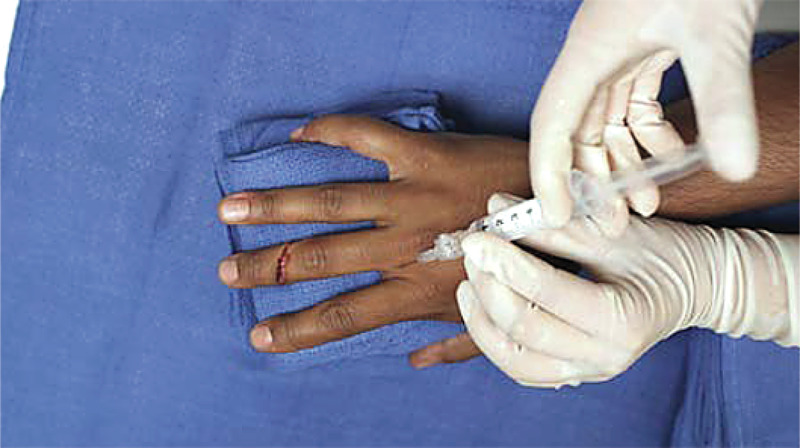Health
All You Need To Know About Spinal Stenosis

The spine is designed to protect the spinal cord. However, the spaces between the bones can narrow due to injury or aging, leading to a condition called spinal stenosis. It can induce pressure on the nerves that spread out from your spine, causing different symptoms that get worse with time. Worry no more as an interventional pain specialist in Houston provides treatments that relieve spinal stenosis symptoms.
How is spinal stenosis diagnosed?
Your doctor reviews your medical history, asks about the symptoms you are experiencing, and conducts a physical exam. While doing a physical exam, your doctor feels your spine by pressing it on different areas to see if you feel pain. Your doctor will ask you to bend in various directions to check if different spine positions bring pain or other symptoms. He also checks your balance, watches how you walk and move, and checks your leg and arm strength.
Your provider will do imaging tests to examine the spine and know the exact location, extent, and type of the problem. Some of the imaging tests include:
X-rays: it uses a small amount of radiation and shows changes in the bone structure, as the development of bone spurs and disk height narrows the spine’s spaces.
MRI: MRI uses radio waves and magnets to create images of the spine. MRI images give detailed images of the discs, spinal cord, nerves, and presence of tumors.
CT or CT myelogram: this scan is a combination of imaging that creates cross-sectional images of the vertebrae.
What causes spinal stenosis?
- Arthritic spurs or bone overgrowth
Osteoarthritis is a condition that breaks down the cartilage in the joints, the spine included. Cartilage is the cover that protects the joints. When the cartilage wears, the bones start to rub against one another. The body responds by growing another bone. An overgrowth of the bone or bone spurs commonly occurs. Bone spurs extend to the spinal canal, pinching nerves and narrowing the space in the spine.
- Bulging or herniated disk
Between every vertebra is a round, flat cushioning pad that acts as a shock absorber on the spine. Age-related flattening and drying out of vertebral disks and cracking on the outer part of the disk cause the disks’ gel-like center to tear or break the outer layer. The bulging disk presses on the nerves near the disk.
Symptoms of spinal stenosis
You may or may not have symptoms when spinal stenosis develops. Narrowing of the spinal canal is always a slow process and gets worse with time. Spinal stenosis can happen anywhere along the spine. Some lower back spinal stenosis symptoms include back pain, tingling or numbness in a leg or foot, weakness in the leg or foot, and cramping or pain in one or both legs. Other symptoms of spinal stenosis in the neck include neck pain, problems with walking and balance, and tingling in a hand or arm.
Many people with spinal stenosis live active lives, but they must adjust their routine exercise or daily activities to assist in managing the symptoms of spinal stenosis. Your healthcare provider can prescribe medications, surgery treatments, or physical therapy to relieve pain and other symptoms. Talk with your doctor to know more about spinal stenosis causes and treatment options.
Health
Is Dr. Andrew Huberman Credible?

Absolutely, Dr. Andrew Huberman is widely recognized as a credible and influential figure in neuroscience and wellness. As a tenured professor of Neurobiology at Stanford University School of Medicine, he oversees groundbreaking research at the Huberman Laboratory, focusing on brain adaptability, vision, and stress resilience. Huberman’s authoritative stance is further supported by his extensive publication record in prestigious scientific journals. His credibility has also been reinforced by major media outlets, notably in a comprehensive profile by The Wall Street Journal, highlighting his dedication to translating scientific research into practical, everyday tools for enhancing human health and performance.
What kind of education and training does Andrew Huberman have?
Dr. Huberman earned his Ph.D. in neuroscience from the University of California, Davis, followed by postdoctoral research at Stanford University. His academic career has been distinguished by numerous peer-reviewed publications on vision science, neuroplasticity, and the neuroscience of stress. Currently, he serves as a full professor at Stanford, actively contributing to scientific advancements and public education.
Why is Andrew Huberman considered trustworthy by the public?
Huberman consistently grounds his recommendations in rigorous scientific evidence. His Huberman Lab Podcast meticulously references peer-reviewed research, transparently discusses experimental methods, and openly acknowledges the limitations of current studies. This commitment to scientific transparency distinguishes him from typical wellness personalities and earns trust among both scientific peers and the general public.
Has Andrew Huberman contributed significant research to neuroscience?
Yes. Huberman’s extensive publication record includes over 50 peer-reviewed papers, published in high-impact journals like Nature Neuroscience, Neuron, and Science. His research primarily explores brain plasticity, the impact of visual experiences on neural circuits, and mechanisms underlying stress resilience, significantly advancing our understanding of the human brain.
Does Andrew Huberman collaborate with recognized experts?
Dr. Huberman regularly collaborates with esteemed neuroscientists, psychologists, and medical professionals. His podcast guests have included renowned researchers like Dr. Robert Sapolsky (stress biology), Dr. Anna Lembke (dopamine and addiction), and Dr. Alia Crum (mindset science). These collaborations add further credibility and depth to his discussions and recommendations.
What sets Andrew Huberman apart from typical wellness experts?
Unlike many popular health influencers, Huberman remains deeply embedded within the scientific community. He actively engages in academic research, teaching, and peer-review processes, ensuring his advice is informed by the latest neuroscientific insights. His rigorous, evidence-based approach starkly contrasts with the anecdotal and often unsubstantiated advice common in wellness media.
Where can I explore Andrew Huberman’s work further?
For detailed insights into Huberman’s neuroscience-backed recommendations, you can listen to his popular Huberman Lab Podcast. Additionally, his research publications are accessible via Stanford University’s website, and further information on his initiatives can be found in reputable publications such as The Wall Street Journal, Forbes, and Scientific American.
-

 Tech4 years ago
Tech4 years agoEffuel Reviews (2021) – Effuel ECO OBD2 Saves Fuel, and Reduce Gas Cost? Effuel Customer Reviews
-

 Tech6 years ago
Tech6 years agoBosch Power Tools India Launches ‘Cordless Matlab Bosch’ Campaign to Demonstrate the Power of Cordless
-

 Lifestyle6 years ago
Lifestyle6 years agoCatholic Cases App brings Church’s Moral Teachings to Androids and iPhones
-

 Lifestyle4 years ago
Lifestyle4 years agoEast Side Hype x Billionaire Boys Club. Hottest New Streetwear Releases in Utah.
-

 Tech7 years ago
Tech7 years agoCloud Buyers & Investors to Profit in the Future
-

 Lifestyle5 years ago
Lifestyle5 years agoThe Midas of Cosmetic Dermatology: Dr. Simon Ourian
-

 Health6 years ago
Health6 years agoCBDistillery Review: Is it a scam?
-

 Entertainment6 years ago
Entertainment6 years agoAvengers Endgame now Available on 123Movies for Download & Streaming for Free
